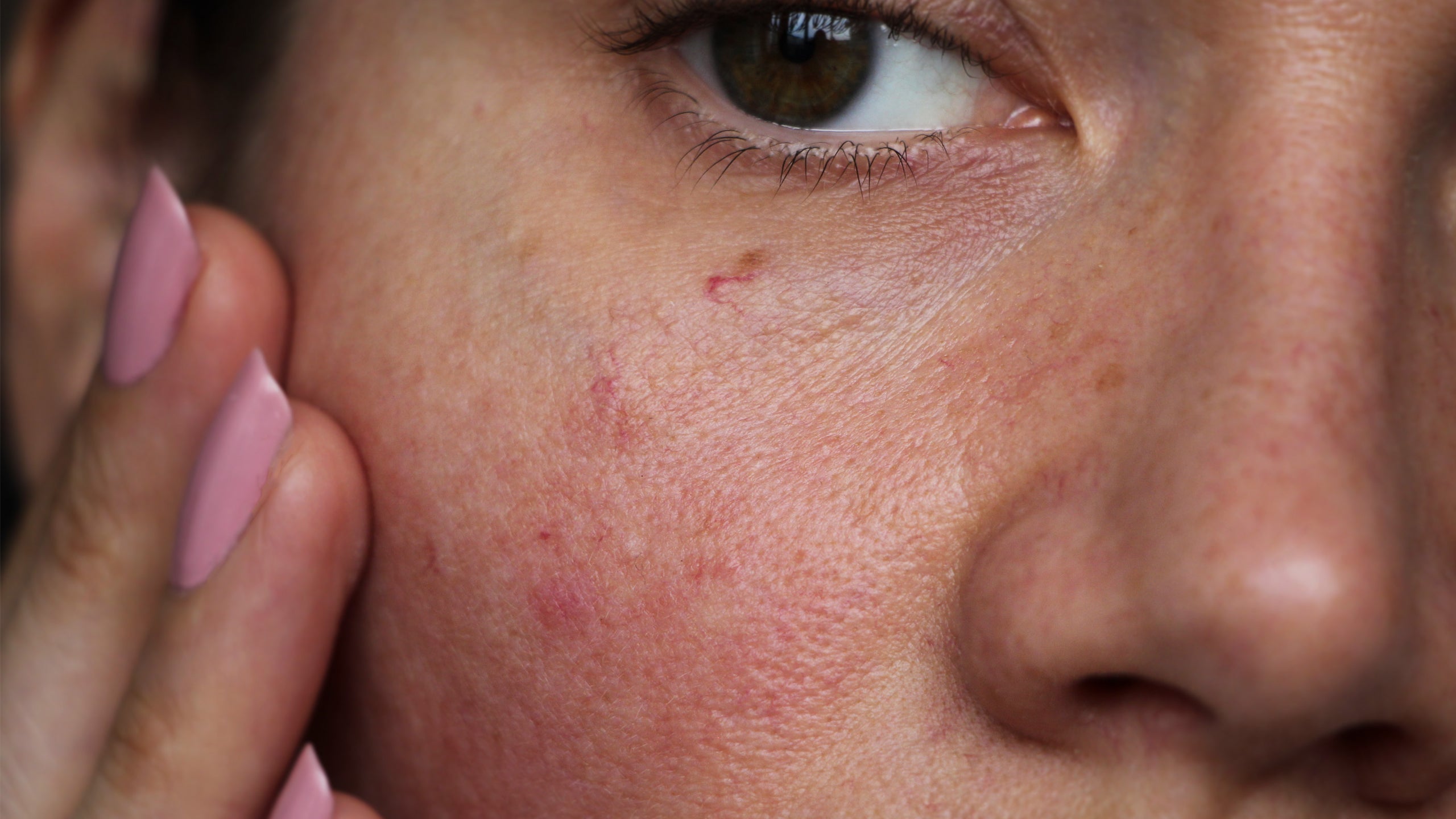Thinking about microscopic bugs living in your hair follicles and eating dead skin cells isn’t pleasant… yet we all have microorganisms, including skin mites, living on us. As strange as it sounds, it’s completely normal!
Demodex folliculorum are a type of mite that’s typically found on your face, specifically around the eyelids and lashes. Most of the time, the D. folliculorum live harmlessly on your skin, not causing any problems at all. However, if the number of Demodex folliculorum living on the skin increases, research shows these skin mites may contribute to facial redness.
This is huge! Little concrete information has been uncovered about the underlying causes of facial redness. Uncovering the evidence on these Demodex mites was a major breakthrough.
Researchers still have so much more to learn about how skin mites may be contributing to facial redness, but here’s what we know so far...
How Skin Mites Contribute to Skin Redness
Research shows that Demodex mites live on every adult that’s over the age of 18. There are two distinct types: D. folliculorum that lives in your hair follicles (primarily on the face), which we’ve already mentioned, and D. brevis that live in the sebaceous glands of your skin.
Rosacea patients have been found to have 15–18 times more Demodex mites than patients without facial redness. This increased number of mites seems to cause inflammation in the skin that then leads to facial redness.
However, researchers believe it’s not the mite itself that’s setting off this inflammatory immune response — but the bacteria they carry.
Demodex mites carry the bacteria Bacillus oleronius, which has been linked to the stimulus of an inflammatory immune response in some individuals.
Researchers found that antibiotics that are effective against Bacillus oleronius are effective treatment for facial redness, while antibiotics that aren’t capable of destroying Bacillus oleronius are not effective at treating facial redness.
Coincidence? We think not! But this is just the beginning… More research is needed to know more about how mites carrying the bacteria B. oleronius may cause facial redness.
Other Causes of Facial Redness (Besides Mites)
It’s important to note that skin mites and the B. oleronius bacteria they carry aren’t the only possible cause of your skin redness. In fact, there are a number of factors that could be causing facial redness, like:
- Environmental and lifestyle factors, including hot or cold weather, wind, emotional stress, eating spicy foods, consuming alcohol, etc.
- Irritation from harsh chemicals in skin care products, such as alcohols, menthol, witch hazel, synthetic fragrances, parabens, preservative, glycolic acid, and salicylic acid.
- SIBO (small intestinal bacterial overgrowth) – Almost 50% of people suffering from facial redness also have SIBO... and after receiving treatment for SIBO, 90% of those patients saw significant or complete reduction of their facial redness.
- Dryness
- Genetics
How to Reduce Facial Redness Caused by Mites (& Beyond!)
At the root of skin mites and some of the other common causes of skin redness is an imbalanced skin microbiome.
The skin microbiome refers to an ecosystem of billions of microorganisms, including bacteria, viruses, fungi, and protozoa, that are invisible to the naked eye yet live on every single one of us. As we continue to research these tiny microbes, scientists are uncovering a strong correlation between the skin microbiome and the overall health of the skin.
So, it’s crucial to help maintain an ideal balance of the microorganisms living on your skin. Because when a harmless microbe begins to overpopulate, it can throw off the balance of the skin — even if it was initially harmless to you when in a balanced ratio.
We created Gladskin Redness Relief Cream to help you restore balance to your skin microbiome.
Gladskin Redness Relief Cream defends against redness-causing bacteria and creates a healthy environment for good bacteria to thrive, leaving little room for bad bacteria to take over!
While it works in harmony with your skin to bring balance back to your microbiome, it also moisturizes! Replenishing your skin’s natural moisture and keeping dryness at bay helps protect your natural skin barrier… your body’s first line of defense against foreign invaders!
In addition to using Gladskin Redness Relief Cream as needed, cleanse your face twice daily with a non-soap, non-oil-based facial cleanser, and practice occasional gentle exfoliation to help minimize the amount of dead skin.
Conventional Treatment for Skin Mites
If you’re experiencing drastic changes in your facial skin, including skin redness, dryness, itching, stinging, etc., always be sure to consult with your healthcare provider or dermatologist. Because many potential causes exist for these symptoms, a healthcare professional will be able to look at your skin, evaluate lifestyle factors, and help you identify the best treatment plan possible.
If your provider suspect skin mites as the root cause of your skin redness, conventional treatment options may include:
- Antibiotics
- Topical parasiticide
- And more
Always remember that when using a harsh treatment, these options may also subsequently kill off some of the good bacteria that your skin needs! No matter what treatment option you and your healthcare provider decide on, always keep your skin microbiome balance in mind.
Takeaways
While skin mites sound like a dreaded and gross problem to deal with, skin mites are actually very common — and nothing to worry about in healthy amounts. It’s when skin mites overpopulate the skin that they become an issue. In fact, researchers believe the mites themselves aren’t to blame, but the B. oleronius bacteria they carry. That’s why when dealing with facial redness, balancing your skin microbiome needs to be top of mind. We recommend Gladskin Redness Relief to help you restore an ideal ratio of good to bad microbes on the skin — while moisturizing your skin to help protect its natural barrier.
Sources
https://www.rosacea.org/patients/the-ecology-of-your-face-demodex-rosacea-and-you
https://www.rosacea.org/patients/causes-of-rosacea/demodex-mites-and-microbes

